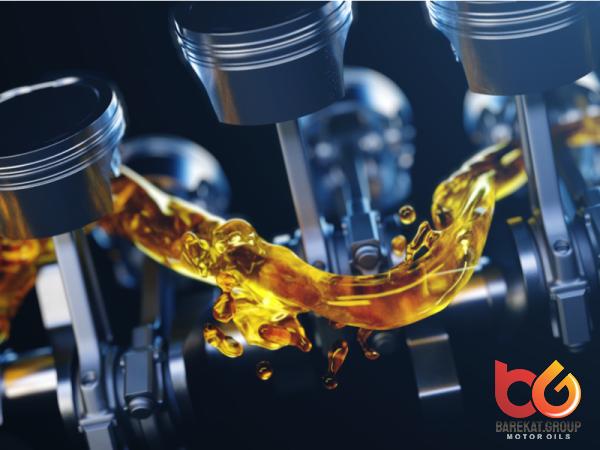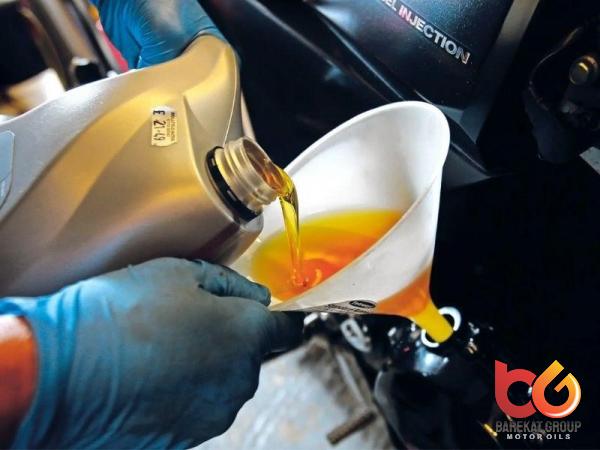Title: Engine Oil 4L Purchase Price and Preparation Method: A Comprehensive Guide Introduction: Engine oil is an essential lubricant that plays a vital role in maintaining the overall health and performance of your vehicle’s engine. Regularly changing the engine oil is crucial to ensure its efficiency, longevity, and smooth functioning. In this comprehensive guide, we will explore the factors influencing the purchase price of engine oil and provide an overview of the preparation method for an oil change. Part 1: Factors Influencing the Purchase Price of Engine Oil 1. Quality Grade: Different quality grades of engine oil offer varying levels of performance and protection. Higher quality oils, such as synthetic oils, often come at a higher price compared to conventional oils due to their advanced formulations and superior properties. 2. Brand Reputation: Established and reputable brands often have higher prices due to their commitment to quality and research-driven formulations. These brands typically invest in extensive testing and use premium additives to enhance the oil’s performance, resulting in a higher price point. 3. Viscosity Rating: Viscosity refers to the oil’s resistance to flow and is determined by its thickness at different temperatures.
Engine oil
 Different engines require different viscosity ratings to optimize performance. Wider viscosity ranges, such as multi-viscosity oils, are typically more expensive due to their added versatility. 4. Additives: Engine oils may contain various additives to enhance performance, protect against wear, prevent oxidation, and improve fuel efficiency. The presence and quality of these additives can affect the price of the oil. 5. Packaging and Quantity: Engine oil is available in various packaging sizes, typically ranging from 1L to 20L or more. Larger containers often offer a lower price per liter compared to smaller quantities. Additionally, some brands may offer bulk deals or discounts for purchasing larger quantities, further affecting the purchase price. Part 2: Preparation Method for an Oil Change Before initiating an oil change, it is essential to gather the necessary tools and materials. Here’s a step-by-step guide to help you prepare: 1. Tools and Materials Required: – Engine oil appropriate for your vehicle’s make and model (4L in this case) – Oil filter – Oil pan/bucket to collect old oil – Ratchet/socket set – Oil filter wrench – Funnel – Gloves and safety goggles – Jack and jack stands (if required for access) – Disposable rag or paper towels
Different engines require different viscosity ratings to optimize performance. Wider viscosity ranges, such as multi-viscosity oils, are typically more expensive due to their added versatility. 4. Additives: Engine oils may contain various additives to enhance performance, protect against wear, prevent oxidation, and improve fuel efficiency. The presence and quality of these additives can affect the price of the oil. 5. Packaging and Quantity: Engine oil is available in various packaging sizes, typically ranging from 1L to 20L or more. Larger containers often offer a lower price per liter compared to smaller quantities. Additionally, some brands may offer bulk deals or discounts for purchasing larger quantities, further affecting the purchase price. Part 2: Preparation Method for an Oil Change Before initiating an oil change, it is essential to gather the necessary tools and materials. Here’s a step-by-step guide to help you prepare: 1. Tools and Materials Required: – Engine oil appropriate for your vehicle’s make and model (4L in this case) – Oil filter – Oil pan/bucket to collect old oil – Ratchet/socket set – Oil filter wrench – Funnel – Gloves and safety goggles – Jack and jack stands (if required for access) – Disposable rag or paper towels
Specifications of Engine oil
 2. Choosing the Right Engine Oil: Ensure that you consult your vehicle’s manual or the manufacturer’s recommendations to determine the correct viscosity grade and oil type. Consider the driving conditions and the average temperature range in your area to make an informed choice. 3. Safety Precautions: Safety should be a top priority during an oil change. To ensure your well-being, make sure to: – Park your vehicle on a level surface and engage the parking brake. – Allow the engine to cool down before beginning the oil change to avoid any risk of burns. – Wear goggles and gloves to protect your eyes and skin from oil splatters. 4. Preparing the Vehicle: – Locate the oil drain plug beneath the engine. Position the oil pan/bucket directly beneath it to catch the old oil. – Place the jack stands (if required) to support the vehicle securely.
2. Choosing the Right Engine Oil: Ensure that you consult your vehicle’s manual or the manufacturer’s recommendations to determine the correct viscosity grade and oil type. Consider the driving conditions and the average temperature range in your area to make an informed choice. 3. Safety Precautions: Safety should be a top priority during an oil change. To ensure your well-being, make sure to: – Park your vehicle on a level surface and engage the parking brake. – Allow the engine to cool down before beginning the oil change to avoid any risk of burns. – Wear goggles and gloves to protect your eyes and skin from oil splatters. 4. Preparing the Vehicle: – Locate the oil drain plug beneath the engine. Position the oil pan/bucket directly beneath it to catch the old oil. – Place the jack stands (if required) to support the vehicle securely.
Buy Engine oil
 Follow the manufacturer’s instructions for proper placement. – If necessary, remove any undercarriage panels or shields to access the drain plug and oil filter easily. 5. Draining the Old Oil: – Use a ratchet/socket set to loosen and remove the oil drain plug. – Allow the old oil to completely drain into the oil pan/bucket. Ensure that you capture all the oil to prevent any environmental contamination. – Once drained, use a rag or paper towels to wipe the drain plug clean. Inspect the plug’s gasket and replace if necessary. 6. Replacing the Oil Filter: – Using an oil filter wrench, loosen and remove the old oil filter. Prepare the new oil filter by applying a thin layer of fresh oil on its gasket. – Install the new oil filter by hand-tightening it. Avoid over-tightening, as it may lead to future difficulty in removal. – Clean any residual oil around the filter area to prevent leakage. 7. Adding New Oil: – Using a funnel, carefully pour the new engine oil into the engine oil filler cap located on top of the engine.
Follow the manufacturer’s instructions for proper placement. – If necessary, remove any undercarriage panels or shields to access the drain plug and oil filter easily. 5. Draining the Old Oil: – Use a ratchet/socket set to loosen and remove the oil drain plug. – Allow the old oil to completely drain into the oil pan/bucket. Ensure that you capture all the oil to prevent any environmental contamination. – Once drained, use a rag or paper towels to wipe the drain plug clean. Inspect the plug’s gasket and replace if necessary. 6. Replacing the Oil Filter: – Using an oil filter wrench, loosen and remove the old oil filter. Prepare the new oil filter by applying a thin layer of fresh oil on its gasket. – Install the new oil filter by hand-tightening it. Avoid over-tightening, as it may lead to future difficulty in removal. – Clean any residual oil around the filter area to prevent leakage. 7. Adding New Oil: – Using a funnel, carefully pour the new engine oil into the engine oil filler cap located on top of the engine.
Engine oil + buy and sell
 Pour it slowly to avoid spills. – Refer to the vehicle’s manual for the recommended amount of oil required (4L in this case). Avoid overfilling, as it can damage the engine. – Once filled, replace the engine oil filler cap securely. 8. Inspecting and Cleaning: – Start the engine and let it run for a few minutes, checking for any oil leaks. Inspect the oil filter and drain plug area to ensure a secure fit and absence of leaks. – Turn off the engine and wait for a few minutes to allow the oil to settle. – Use the dipstick to check the oil level, ensuring it falls within the recommended range. Conclusion: Purchasing the right engine oil and performing a proper oil change are crucial steps in maintaining the smooth functioning and longevity of your vehicle’s engine. By considering the factors influencing the purchase price of engine oil and following the step-by-step preparation method outlined in this guide, you can ensure a successful and cost-effective oil change. Regular maintenance of your vehicle’s engine oil will not only contribute to its optimal performance but also prevent potential damage and costly repairs in the long run.
Pour it slowly to avoid spills. – Refer to the vehicle’s manual for the recommended amount of oil required (4L in this case). Avoid overfilling, as it can damage the engine. – Once filled, replace the engine oil filler cap securely. 8. Inspecting and Cleaning: – Start the engine and let it run for a few minutes, checking for any oil leaks. Inspect the oil filter and drain plug area to ensure a secure fit and absence of leaks. – Turn off the engine and wait for a few minutes to allow the oil to settle. – Use the dipstick to check the oil level, ensuring it falls within the recommended range. Conclusion: Purchasing the right engine oil and performing a proper oil change are crucial steps in maintaining the smooth functioning and longevity of your vehicle’s engine. By considering the factors influencing the purchase price of engine oil and following the step-by-step preparation method outlined in this guide, you can ensure a successful and cost-effective oil change. Regular maintenance of your vehicle’s engine oil will not only contribute to its optimal performance but also prevent potential damage and costly repairs in the long run.
Your comment submitted.